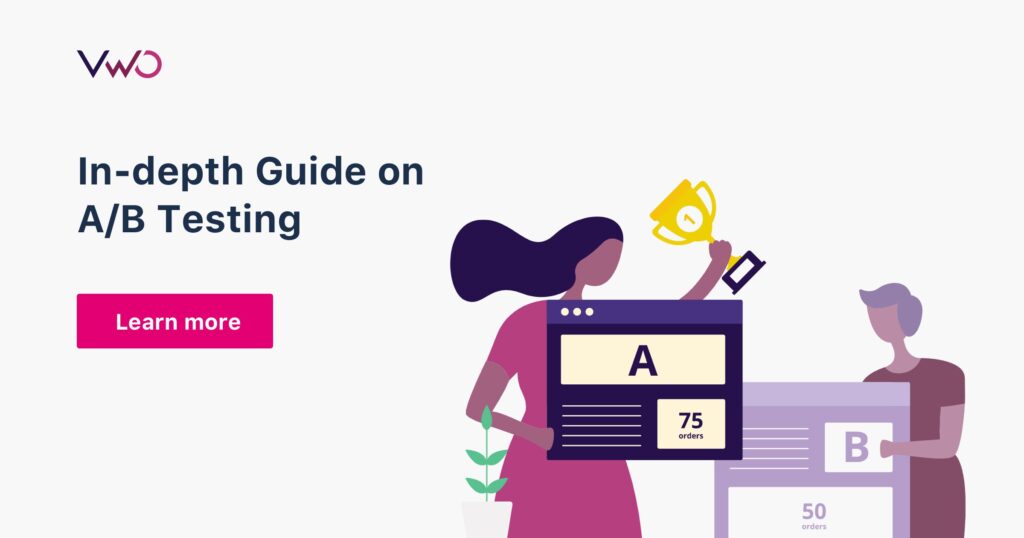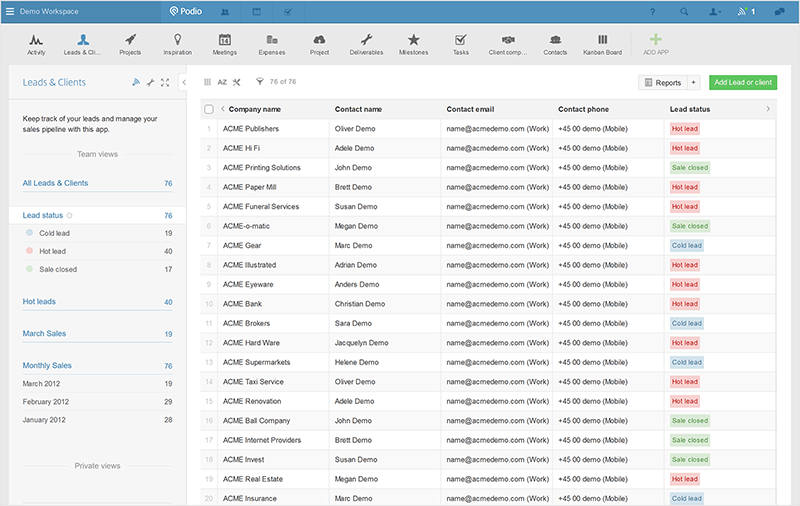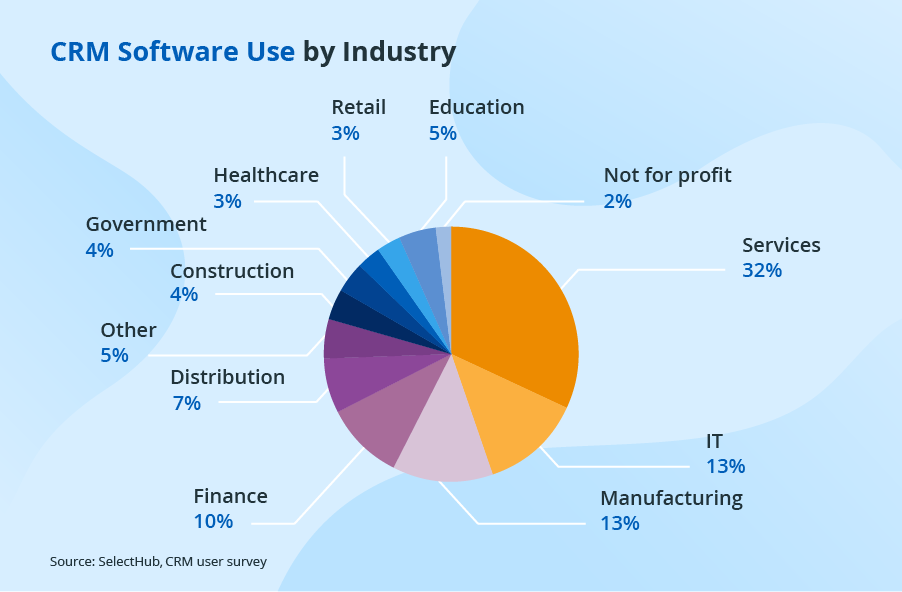
Unlocking the Power of CRM Marketing with A/B Testing
In the dynamic world of digital marketing, staying ahead of the curve is not just an advantage; it’s a necessity. Customer Relationship Management (CRM) marketing has become a cornerstone for businesses seeking to build strong customer relationships, drive engagement, and ultimately, boost revenue. But how do you ensure your CRM strategies are truly effective? The answer lies in the powerful synergy of CRM marketing and A/B testing. This comprehensive guide will delve deep into the intricacies of this pairing, providing you with the knowledge and tools needed to transform your CRM marketing efforts from good to exceptional.
Understanding the Fundamentals: CRM Marketing and A/B Testing
What is CRM Marketing?
CRM marketing is a strategic approach that leverages customer data and insights to personalize and optimize marketing efforts. It goes beyond simply collecting customer information; it involves using that data to understand customer behavior, preferences, and needs. This understanding then informs the creation and delivery of targeted marketing campaigns across various channels, including email, SMS, social media, and even direct mail.
The core objectives of CRM marketing include:
- Enhanced Customer Relationships: Building stronger connections with customers through personalized interactions.
- Improved Customer Retention: Increasing customer loyalty and reducing churn.
- Increased Sales and Revenue: Driving conversions and maximizing the lifetime value of each customer.
- Data-Driven Decision Making: Using customer data to inform marketing strategies and optimize campaigns.
Effective CRM marketing requires a robust CRM system, a well-defined marketing strategy, and a deep understanding of your target audience.
What is A/B Testing?
A/B testing, also known as split testing, is a method of comparing two versions of a marketing asset (e.g., email, landing page, ad) to determine which performs better. It’s a data-driven approach that allows marketers to make informed decisions based on real-world results rather than guesswork. In an A/B test, you create two variations of a specific element, such as a subject line, call-to-action button, or headline. You then randomly show these variations to different segments of your audience and analyze which version generates the best results, such as higher click-through rates, conversion rates, or engagement levels.
The benefits of A/B testing are numerous:
- Improved Conversion Rates: By optimizing marketing assets based on data, you can significantly increase your conversion rates.
- Enhanced User Experience: A/B testing helps you understand what resonates with your audience, leading to a better user experience.
- Data-Driven Decisions: A/B testing provides concrete data to support your marketing decisions, reducing the risk of relying on assumptions.
- Increased ROI: By optimizing your marketing campaigns, you can maximize your return on investment.
A/B testing is an iterative process; you continuously test and refine your marketing efforts to achieve optimal results.
The Powerful Combination: CRM Marketing and A/B Testing
When CRM marketing and A/B testing are combined, the results can be transformative. CRM systems provide the data and insights needed to identify specific customer segments and tailor marketing messages accordingly. A/B testing allows you to refine those messages and optimize them for maximum impact. The integration of these two strategies allows for a highly personalized and data-driven approach to marketing.
Why A/B Test in CRM Marketing?
A/B testing is crucial for CRM marketing because it enables you to:
- Personalize Marketing Messages: Test different variations of email subject lines, content, and calls-to-action to see what resonates best with different customer segments.
- Optimize Email Campaigns: Experiment with different email templates, send times, and layouts to improve open rates, click-through rates, and conversions.
- Improve Landing Page Performance: Test different landing page elements, such as headlines, images, and forms, to optimize conversion rates.
- Refine Customer Journeys: A/B test different sequences of emails and interactions to guide customers through the sales funnel more effectively.
- Drive Continuous Improvement: A/B testing provides a framework for ongoing optimization and improvement of your CRM marketing efforts.
By continuously testing and refining your CRM marketing strategies, you can ensure that you are delivering the right message to the right customer at the right time, maximizing your chances of success.
Key Areas to A/B Test in CRM Marketing
The possibilities for A/B testing within CRM marketing are vast. Here are some key areas to focus on:
Email Marketing
Email marketing is a core component of many CRM strategies, making it a prime target for A/B testing. Consider testing:
- Subject Lines: Experiment with different tones, lengths, and keywords to see what increases open rates.
- Email Content: Test different content formats, such as plain text versus HTML, and different content lengths and styles.
- Calls-to-Action (CTAs): Test different CTA buttons, text, and placements to optimize click-through rates.
- Email Templates: Experiment with different email layouts and designs to see what resonates best with your audience.
- Send Times: Test different send times to determine when your audience is most likely to engage with your emails.
- Segmentation: Test how different segments respond to different email campaigns.
Landing Pages
Landing pages are critical for converting leads into customers. A/B testing can help you optimize your landing pages for maximum performance. Focus on testing:
- Headlines: Test different headlines to see which ones capture your audience’s attention and effectively communicate your value proposition.
- Images and Videos: Experiment with different visuals to see which ones resonate best with your audience.
- Forms: Test different form lengths, layouts, and fields to optimize conversion rates.
- Call-to-Action Buttons: Test different button text, colors, and placements to maximize clicks.
- Page Layout and Design: Experiment with different page layouts and designs to improve user experience and conversions.
Customer Journeys
Customer journeys are the paths that customers take as they interact with your brand. A/B testing can help you optimize these journeys for a better customer experience and increased conversions. Consider testing:
- Email Sequences: Test different email sequences to see which ones are most effective at nurturing leads and driving conversions.
- Onboarding Processes: Test different onboarding processes to improve customer engagement and retention.
- Lead Nurturing Campaigns: Test different lead nurturing campaigns to see which ones are most effective at moving leads through the sales funnel.
SMS Marketing
If you utilize SMS marketing, A/B testing can be highly beneficial:
- Message Content: Test different text messages to understand what resonates best with your audience.
- CTAs: Experiment with different calls to action to see which drives the most engagement.
- Send Times: Test different sending schedules to optimize for open and click-through rates.
Setting Up Your A/B Tests in CRM Marketing
The process of setting up A/B tests in CRM marketing involves several key steps:
- Define Your Goals: Start by clearly defining what you want to achieve with your A/B test. What specific metric are you trying to improve (e.g., open rate, click-through rate, conversion rate)?
- Identify the Element to Test: Choose a specific element of your marketing asset to test. This could be a subject line, CTA button, headline, or any other element that you believe could impact performance.
- Create Variations: Create two or more variations of the element you are testing. Make sure each variation is different from the others.
- Segment Your Audience: Decide which segment of your audience will be included in the test. Ensure that the segment is large enough to generate statistically significant results.
- Run the Test: Launch the A/B test and let it run for a predetermined period of time. Monitor the results closely.
- Analyze the Results: After the test has run for a sufficient amount of time, analyze the results to determine which variation performed best. Look for statistically significant differences in performance.
- Implement the Winning Variation: Once you have identified the winning variation, implement it across your CRM marketing campaigns.
- Monitor and Iterate: Continue to monitor the performance of your campaigns and iterate on your A/B testing efforts to continuously improve your results.
Tools for A/B Testing in CRM Marketing
Several tools can help you conduct A/B tests in your CRM marketing efforts:
- CRM Platforms: Many CRM platforms, such as Salesforce, HubSpot, and Zoho CRM, offer built-in A/B testing capabilities or integrations with A/B testing tools.
- Email Marketing Platforms: Email marketing platforms like Mailchimp, Constant Contact, and ConvertKit provide A/B testing features for email campaigns.
- Landing Page Builders: Landing page builders like Unbounce, Leadpages, and Instapage offer A/B testing capabilities to optimize landing page performance.
- Dedicated A/B Testing Tools: Tools like Optimizely and VWO (Visual Website Optimizer) are specifically designed for A/B testing and can be integrated with various marketing platforms.
Choosing the right tool depends on your specific needs and budget. Consider the features, ease of use, and integration capabilities of each tool before making a decision.
Best Practices for Successful A/B Testing in CRM Marketing
To maximize the effectiveness of your A/B testing efforts, it’s essential to follow these best practices:
- Focus on One Element at a Time: Test only one element at a time to ensure that you can accurately identify the impact of each variation.
- Test Significant Changes: Focus on testing changes that are likely to have a significant impact on performance. Small, incremental changes may not produce statistically significant results.
- Use a Large Enough Sample Size: Ensure that your sample size is large enough to generate statistically significant results. The larger your sample size, the more reliable your results will be.
- Run Tests for a Sufficient Duration: Run your A/B tests for a sufficient amount of time to allow for reliable results. The duration of your test will depend on your traffic volume and the element you are testing.
- Analyze Results Carefully: Don’t rely solely on intuition or gut feelings. Analyze your results carefully to identify statistically significant differences in performance.
- Document Your Tests: Keep detailed records of your A/B tests, including the goals, variations, sample size, duration, and results. This documentation will help you learn from your tests and improve your future efforts.
- Prioritize Your Tests: Focus on testing the elements that are most likely to have the biggest impact on your business goals.
- Test Regularly: A/B testing is an ongoing process. Make it a regular part of your marketing routine to continuously improve your results.
- Be Patient: A/B testing can take time to yield results. Don’t get discouraged if you don’t see immediate improvements.
Common Mistakes to Avoid
While A/B testing is a powerful tool, there are common pitfalls to avoid:
- Testing Too Many Elements at Once: This makes it difficult to determine which element is responsible for any changes in performance.
- Not Running Tests Long Enough: This can lead to unreliable results.
- Relying on Small Sample Sizes: This can also lead to unreliable results.
- Ignoring Statistical Significance: It’s important to ensure that your results are statistically significant before making any decisions.
- Failing to Document Tests: This can make it difficult to learn from your experiences and improve your future efforts.
- Not Implementing Winning Variations: What’s the point of testing if you don’t apply the learnings?
- Making Assumptions: Always rely on data, not assumptions.
Measuring Success: Key Metrics to Track
To gauge the success of your A/B testing efforts, it’s essential to track the right metrics. Here are some key metrics to monitor:
- Open Rate: The percentage of emails that are opened by recipients.
- Click-Through Rate (CTR): The percentage of recipients who click on a link in your email or landing page.
- Conversion Rate: The percentage of recipients who complete a desired action, such as making a purchase or filling out a form.
- Bounce Rate: The percentage of emails that are not delivered to recipients.
- Unsubscribe Rate: The percentage of recipients who unsubscribe from your email list.
- Cost Per Acquisition (CPA): The cost of acquiring a new customer.
- Return on Investment (ROI): The overall profitability of your marketing campaigns.
By tracking these metrics, you can gain a clear understanding of the effectiveness of your A/B testing efforts and make data-driven decisions to optimize your campaigns.
Real-World Examples of CRM Marketing A/B Testing Success
Let’s look at some examples of how businesses have used A/B testing to improve their CRM marketing efforts:
- Example 1: A SaaS company tested two different subject lines for their onboarding emails. One subject line focused on the benefits of the product, while the other focused on the urgency of getting started. The results showed that the subject line focusing on the benefits of the product had a significantly higher open rate and click-through rate, leading to more new users completing their onboarding process.
- Example 2: An e-commerce business tested two different CTAs on their product pages. One CTA used a generic phrase like “Add to Cart,” while the other used a more specific phrase like “Get Yours Now.” The CTA with the more specific phrase resulted in a higher conversion rate and increased sales.
- Example 3: A non-profit organization tested two different email templates for their fundraising campaigns. One template used a simple, text-based format, while the other used a more visually appealing design with images and videos. The results showed that the template with the more visually appealing design had a higher click-through rate and generated more donations.
These examples demonstrate the power of A/B testing to optimize CRM marketing campaigns and drive tangible results. By learning from these examples, you can find inspiration for your own A/B testing efforts.
The Future of CRM Marketing and A/B Testing
The landscape of CRM marketing and A/B testing is constantly evolving. As technology advances and customer expectations change, marketers must adapt their strategies to stay ahead of the curve. Here are some trends to watch:
- Personalization: As customers demand more personalized experiences, CRM marketing will become increasingly focused on delivering highly customized messages and offers. A/B testing will play a crucial role in optimizing personalization efforts.
- Artificial Intelligence (AI): AI-powered tools will be used to automate A/B testing, analyze data, and identify opportunities for optimization.
- Cross-Channel Marketing: Marketers will increasingly use a cross-channel approach, integrating CRM marketing with other channels, such as social media and SMS. A/B testing will be essential for optimizing campaigns across multiple channels.
- Data Privacy: As data privacy regulations become more stringent, marketers will need to prioritize data privacy and transparency in their CRM marketing efforts.
- Mobile Optimization: As mobile usage continues to grow, marketers will need to optimize their CRM marketing campaigns for mobile devices.
By staying informed about these trends, you can position your business for success in the future of CRM marketing and A/B testing.
Conclusion: Embracing the Power of Data-Driven CRM Marketing
CRM marketing, when combined with the power of A/B testing, offers a powerful strategy for businesses seeking to build strong customer relationships, drive engagement, and achieve sustainable growth. By understanding the fundamentals of CRM marketing and A/B testing, identifying key areas to test, using the right tools, following best practices, and avoiding common mistakes, you can transform your CRM marketing efforts from good to exceptional.
Remember to always prioritize data-driven decision-making, embrace continuous improvement, and stay informed about the latest trends in CRM marketing and A/B testing. By doing so, you can unlock the full potential of your CRM marketing efforts and achieve outstanding results.
Embrace the power of A/B testing and watch your CRM marketing efforts soar!


